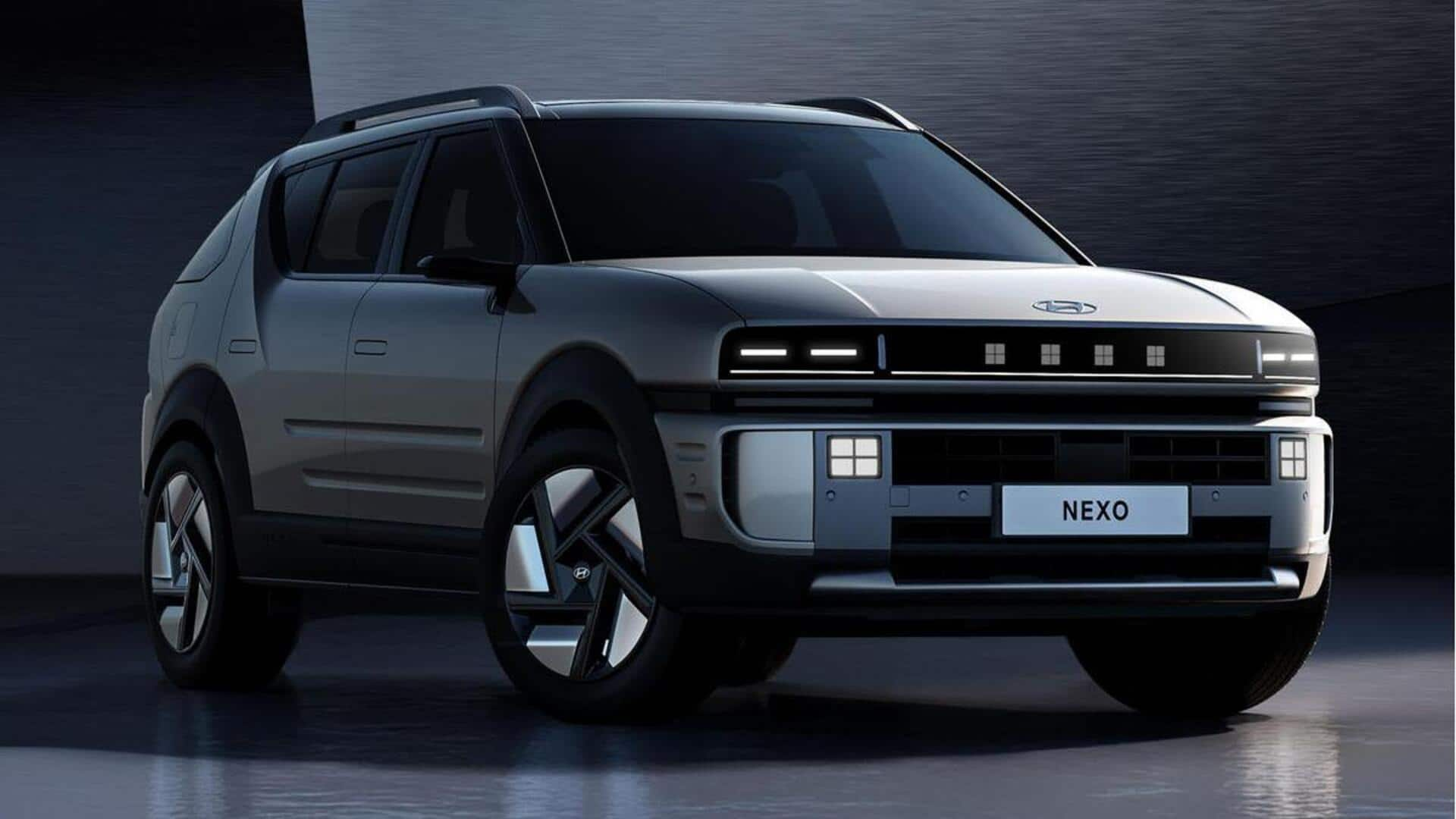
Forget EVs! Hyundai's hydrogen SUV just got a huge upgrade
What's the story
Reiterating its commitment to hydrogen-powered vehicles, Hyundai has unveiled the second generation of its Nexo fuel-cell SUV.
The new model takes cues from last year's Initium concept car and comes with a unique design language called 'Art of Steel.'
This will differentiate future hydrogen fuel cell electric vehicles (FCEVs) from battery-electric and combustion-engined models in Hyundai's lineup.
Design features
Nexo 2.0 showcases a unique design language
The new Nexo model is different from its predecessor, sporting grid-shaped "H-two" front and rear lights and H-shaped surfaces on the bumpers.
These elements are finished in a matte silver color, contrasting with the flat-black body cladding of the car.
The updated design also makes it bigger, taller, and wider than before, positioning it as a competitor to battery-powered EVs like BMW iX3 and Tesla Model Y.
Interior upgrades
Enhanced interior and advanced dashboard features
The interior of the new Nexo has been upgraded to offer more room for passengers.
The car now boasts a 'connected cockpit' dashboard like that of the Ioniq 5, with two 12.3-inch displays: one for instrumentation and the other for infotainment.
Conventional mirrors have been swapped with cameras shown on large screens on either side of the dashboard, adding to its modernity.
Performance upgrades
Advanced powertrain of Nexo 2.0
The second-generation Nexo features a reworked powertrain with a 16% increase in the electrical output of its fuel cell stack - up to 110kW.
Hyundai says this new stack is more durable and works over a wider range of temperatures.
Its maximum battery output has doubled to provide up to 80kW, enabling the installation of a more powerful electric motor that cuts its 0-100km/h acceleration time from 9.2 seconds to just 7.8 seconds.
Range and connectivity
Nexo 2.0 offers impressive range and V2L capacity
The hydrogen tank capacity of the new Nexo has been increased from 6.33kg to 6.69kg, which, along with the more efficient powertrain, boosts its range to over 700km per fill-up.
Plus, the car also boasts vehicle-to-load (V2L) capacity, which lets it connect with external devices and act as a hydrogen-powered generator.
This adds another dimension of utility to Hyundai's innovative SUV model.